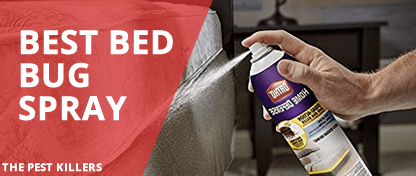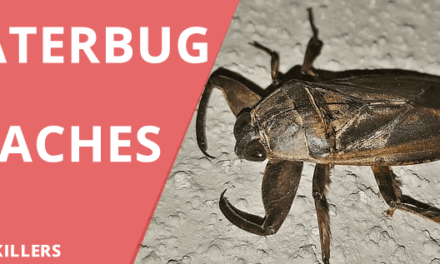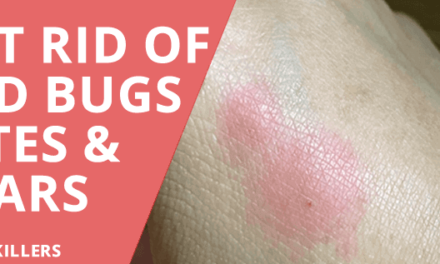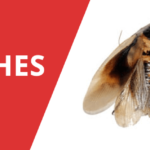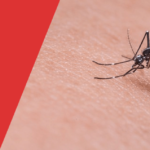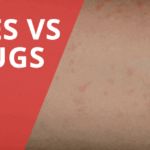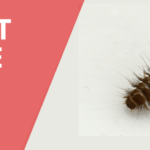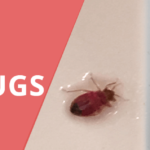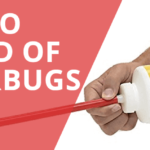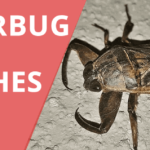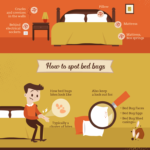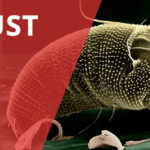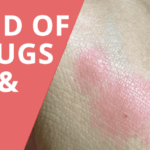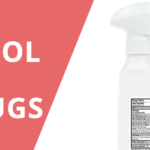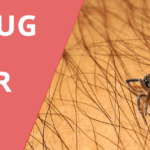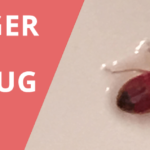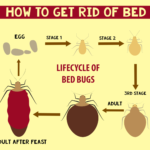Short Answer: No, in fact, dust mites don’t even have eyes!
Dust Mite Bites are a myth. This common misconception is caused by skin irritation due to dust mite feces. The rashes appear as dust mite bites.
Dust mites are your tiny roommates that can inconvenience your day by causing allergic reactions. They feed on the dead skin that humans and other pets/animals shed. Also, dust mites suck moisture from the air for their intake.
It’s difficult to see dust mites without magnification. Nearly 100,000 mites can live in a square meter of a mattress or a carpet. They are often living in carpet, clothing, mattress, and furniture in your home.
Although these mites don’t have eyes, they can easily smell food and sense hormone secretions from other mites. These secretions allow them to communicate with each another.
Habitat – What Attracts Dust Mites?
 Dust mites will thrive where the conditions are right. They need a food supply to survive but they also require the temperature and humidity to be suitable for their growth and reproduction.
Dust mites will thrive where the conditions are right. They need a food supply to survive but they also require the temperature and humidity to be suitable for their growth and reproduction.
Your mattress can be home to thousands of mites. This is because your mattress is warmer and moister compared to other areas of your home. Moreover, you shed skin when you sleep, which is a major source of food for these pests.
Dust mites can also make home on your sofas, couches, and other furniture that traps dust. If you have pets at home, their sleeping place is another potential home for mites.
Types of Dust Mites
Life Cycle of Dust Mites
 The life cycle of a dust mite consists of five stages:
The life cycle of a dust mite consists of five stages:
- Egg
- Larva
- Protonymph
- Tritonymph
- Adult
If the conditions are ideal, a female dust mite can lay up to 3 eggs in a day and a total of 40-80 eggs during its lifespan as an adult. The egg will take around 10 days to hatch.
An adult dust mite can easily live for six to eight weeks, depending upon the conditions and availability of food.
Do Dust Mite Bites exist?

Dust in the average household contains many allergenic components from dust mites such as fecal material, dead skin, and secretions in addition to animal dander, pollen, and mold spores.
Dust mites can drop around 20 dropping a day.
These droppings contain potential allergens (proteins) that can trigger a reaction known as atopic dermatitis. The reaction to dust mites feces can easily develop a skin rash.
These insects are far too small to bite humans. Dust mites don’t have a mouth with teeth. Instead of chewing their food, they secrete an enzyme that breaks down the food.
However, these tiny mites cause skin reactions that could give you red itchy bumps and rash.
Sometimes, you could see small bits of your skin when you wake up. These bites could be due to bedbugs.
Here are some other common myths related to mites.
Do Dust Mites Fly?
Dust mites don’t fly. They don’t have wings but they have 8 legs that help them move anywhere they like.
Remember, you can’t see dust mites with the naked eye
These pests don’t live on humans. However, they can use you as a vehicle to move from one place to another.
Dust Mite Bite vs Bed Bug Bite
 The dust mite is a microscopic pest that’s difficult to see without magnification. Similar to carpet beetles, dust mites don’t bite but can contribute to dust allergens and cause severe allergies in humans.
The dust mite is a microscopic pest that’s difficult to see without magnification. Similar to carpet beetles, dust mites don’t bite but can contribute to dust allergens and cause severe allergies in humans.
On the other hand, a bed bug is tiny but visible. It can bite humans and leave specific markings on the skin.
Typically, bed bug bites don’t cause itching. The bites are often in clusters, grouped in 3 or more. They may resemble mosquito bites.
| Dust Mites | Bed Bugs |
|
|---|---|---|
| Color | Off-white | Brown-reddish |
| Legs | 8 legs (adults) | 6 legs (adults) |
| Size | 0.2mm (require magnification to see) | Tiny but visible to the naked eye |
| Food Source | Dead shed skin | Blood from animals and humans |
| Bites | They don’t bite but cause allergic reactions in humans | Leave small itchy bites |
| Symptoms | Itchiness | Allergies |
Symptoms of Dust Mite Allergy
Dust mites can cause allergic reactions in humans through airborne feces, skin, and chemicals that these bugs release to communicate with each other. The allergy causes inflammation of nasal passage and can result in the following symptoms.
Symptoms in patients with asthma
In addition to symptoms mentioned above, dust mite allergy can induce some additional symptoms in people suffering from asthma.
- Difficulty in breathing with chest pain
- A whistling or wheezing sound coming from the chest when breathing
- Chest congestion
- Interrupted sleep due to coughing or shortness of breath
Should you see a doctor?
Many symptoms of a dust mite allergy are similar to those of a cold. For example, you have a runny nose and sneezing when you have a cold. These are also initial symptoms of an allergy.
If these symptoms persist, you could have an allergy. Similarly, if the signs are severe, it could indicate that it’s an allergy.
In case of an allergy, you should see your doctor immediately. If sneezing, coughing, or shortening of breath persists, seek urgent medical care.
Your doctor may suggest an allergy skin test or a blood test to diagnose your case.
An allergy skin test is a simple test to determine your reaction to dust mite allergens. An allergy specialist will prick purified allergens onto your skin.
After a few minutes, your doctor will closely observe your skin to see if it reacts to the allergens. If you develop a red bump if you are allergic to dust mites.
Since only a tiny amount of allergens is used for this test, the side effects go away within 30 minutes of being pricked onto your skin.
Preventions – How to Get Rid of Dust Mite Allergy
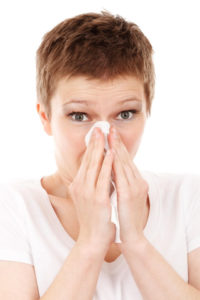 Avoiding exposure to dust mites is easier than you think. With a few basic changes in your lifestyle, you can significantly reduce the number of mites living in your home.
Avoiding exposure to dust mites is easier than you think. With a few basic changes in your lifestyle, you can significantly reduce the number of mites living in your home.
1) Use dust mite encasings for your mattress and pillows
You can easily find dust-proof bed encasings. These will keep your pillow, mattress, and box spring free from dust and therefore prevent mites from colonizing in your mattress.
2) Keep your bedding clean
Wash your bedding weekly including sheets, blankets, and pillow covers. Use hot water to kill the mites and remove allergens from your bedding.
If it’s not possible to wash bedding in hot water, use a dryer and set the temperature to 130F.
Choose bed covers that are easy to wash.
3) Lower the humidity
Dust mites thrive when humidity is around 70%. If you want to get rid of them, lower the humidity to 50% in your home.
You can buy a hygrometer from a local hardware store to measure humidity in your home.
4) Keep stuffed toys away
Stuffed toys can collect a lot of dust and often provide a safe haven to dust mites. So if you have stuffed toys at home, be sure to wash them regularly.
5) Clean up dust with a damp mop
Instead of removing dust using a dry cloth, use a damp mop to avoid dust from becoming airborne. This will also prevent dust from resettling on your bed, furniture, and carpet.
6) Cut Clutter
Clutter in your home could help allergens to accumulate and become airborne later. Remove all non-washable items from your home. Get rid of rugs and other dust catching items in your bedroom. Replace carpeting with hard surface floors.
Dust Mite Prevention Products – Main Categories for Dust Mite Prevention Products
In more serious cases of dust mite bites, some products have claimed to get rid of dust mites using special dust mite prevention products.
But do they really work?
 One of the most common dust mite prevention products is a vacuum cleaner. Although it doesn’t kill mites, it does suck in their eggs.
One of the most common dust mite prevention products is a vacuum cleaner. Although it doesn’t kill mites, it does suck in their eggs.
In addition to removing eggs, a vacuum cleaner will get rid of the food that mites eat. With the decline in their food supply, mites will be easy to kill.
Why a regular vacuum cleaner won’t work against dust mites?
When you use a regular unit vacuum, the mites can cling on to cloth fiber and avoid being sucked into the vacuum. Even if your regular vacuum sucks in dust mites and their eggs, it will throw them back out. That would not kill them.
Get one with HEPA filters
A specialized vacuum cleaner for dust mites comes with HEPA filters. These filters will keep the mites and their eggs inside vacuum instead of throwing them out again.
A HEPA filter usually last for up to a year. After that period, you will need to change the filters.
Select the right design
Apart from having a HEPA filter installed, you also need to pay attention to the design of the unit. A vacuum cleaner should be properly sealed from all sides to prevent dust particles from escaping.
Have you heard about UV vacuum cleaners?
Some modern anti-dust mite vacuum cleaners are UV equipped. It makes them more effective as UV radiation will wipe out the allergens such as droppings of mites. These droppings contain enzymes that cause dust allergy.
Ideally, you should steam clean in addition to vacuuming. While the vacuum will remove the eggs and the food, a steam cleaner will kill the bugs and mites.
- Removes dust mite eggs effectively
- Gets rid of shed skin and other food sources for mites
- Units equipped with UV light will get rid of allergens as well
- Won’t do anything at all if the HEPA filter isn’t installed
- Vacuuming can stir dust particles around making them airborne

Like bed bug sprays, anti-dust mite sprays are another product that can help you get rid of dust mites and allergies from your home. They can be used on carpets, bedding, mattresses, curtains, and upholstered furniture.
How do they work?
Anti-allergen sprays work in two ways. Firstly, they kill mites using their acidic ingredients. Secondly, they mask the allergens so that your immune system won’t respond to the allergen as a ‘trigger’ to allergy.
These products help you keep dust mites numbers in check. They can minimize allergens and kill dust mites to reduce their population.
For continued protection against allergens and mites, you will need to spray every 4-6 months.
Important considerations when buying an anti-dust mite spray
Make sure you buy a spray that is people and pet-friendly. Look for EPA registration to ensure that the product meets minimal environmental protection standards.
Choose a spray with natural ingredients to stay on the safer side. You don’t want to spray aggressive chemicals on your pillow and bed covers. While getting rid of dust allergy, these products can actually give you another set of problems to worry about.
- They are not pesticides
- Anti-dust mite sprays are non-toxic
- Doesn’t stain your clothing and bed sheets
- Ingredients are not always environment-friendly
- Some ingredients in these sprays can irritate your skin

Dust mite mattress and pillow covers are an excellent choice when you want to get rid of dust allergy, dust mites, and bed bugs. It’s a simple, fast, and cost-effective way to minimize the contact with dust particles and mites that colonize in your bedroom. These zippered encasings will cover your mattress, box spring, pillows, and toppers.
How do they work?
This covering works as a barrier, trapping the mites and their eggs inside and refusing them food supply. They will eventually die from lack of food supply.
Dust mite encasings also reduce allergies in your home by trapping allergens just the way they trap the mites and their eggs. They create a barrier between you and the allergens. It will also mean that mite droppings won’t become airborne when you clean your bedding.
It’s one of the most effective steps in making your home allergy-free.
- Safe and environment-friendly approach
- Effective against dust mites and bed bugs
- They are zippered so mites and bugs won’t escape
- Doesn’t get rid of mites and bugs hiding in places other than bedding – think of carpets

Dust mite allergen detergents should be used in addition to any other prevention product that you use at your home.
These special detergents contain surfactants that will increase the surface tension of the water. As a result, allergens and mites will be dislodged from the fabric, which makes it easy to rinse them away.
Some of these products can contain fragrance or dyes. These can irritate sensitive people so be sure to read the label carefully when buying a detergent to get rid of dust mites.
- Removes allergens from clothing including bed sheets and pillow covers
- Excellent product to be used in combination with other dust mite prevention products
- Easy to use
- Effectiveness of washing will depend upon the type of fabric and may not give satisfactory results with silk
Treatment of Dust Mite Allergy

The best treatment option for dust mite allergy is to limit your exposure to these pests.
If you have dust mite allergy, be sure to visit your doctor. You will have to answer simple questions about your home and work environment in addition to undergoing skin allergy test. This will help your doctor determine the underlying cause of your allergy.
Below, you can learn about simple treatments to reduce skin allergy symptoms such as itchiness and redness caused by dust mites.
1) Stay away from dust
It’s obvious. Stay away from what triggers your allergy. If dust mites have caused you an allergy, be sure to wash your bedding in hot water and vacuum carpets and upholster furniture using a UV vacuum cleaner. Additionally, avoid coming in contact with stuffed toys, carpet, and mattress.
2) Take a cold shower
A cold shower can reduce the itchiness and help to calm down a rash. When dust mites trigger skin allergy, your immune system responds by releasing a chemical that enters the tissue beneath your skin.
A cold shower will shrink your blood vessels, as a result, your skin irritation and itchiness will go away.
3) Wear loose clothes
Tight clothes may come in contact with your skin more often and irritate a rash and increase itchiness. Wear loose clothes to minimize skin contact.
4) Use an anti-itch cream
You can easily find an over-the-counter anti-itch cream. Creams and lotions containing calamine or hydrocortisone may provide relief in case of mild or severe itching.
Home remedies for rash allergies
Allergen products
Allergy Flu Shots: Flu shots vaccinate you against flu and therefore help you reduce the symptoms of dust mite allergy.
Rash Ointment: Use an over-the-counter rash ointment to heal rashes caused by dust mite bites.
Antihistamines: They provide a relief in case of itching and sneezing.
Medication for dust mite allergy: To help relieve sneezing and itching, you can use Allegra or Claritin. For nasal congestion, medicines such as Nasonex and Flonase work wonders.
It’s important to see a doctor before you take any medicine for allergy. Your doctor will diagnose the cause of allergy and prescribe the appropriate medicine accordingly.
Dust Mite Bites – Conclusion
 Dust mites are tiny eight-legged organisms that are present in every home. Contrary to popular opinion, dust mites don’t bite humans. However, they can cause allergic reactions in humans through their droppings, mostly found in mattresses, pillows, and carpeting.
Dust mites are tiny eight-legged organisms that are present in every home. Contrary to popular opinion, dust mites don’t bite humans. However, they can cause allergic reactions in humans through their droppings, mostly found in mattresses, pillows, and carpeting.
The allergic reaction caused by dust mites could cause sneezing, runny nose, itching on the skin, and watery eyes.
Although it’s nearly impossible to get rid of these mites, you can easily reduce their number in your home by regularly cleaning your home. You should also wash your bedding in hot water and encase it in anti-dust mite covers.


